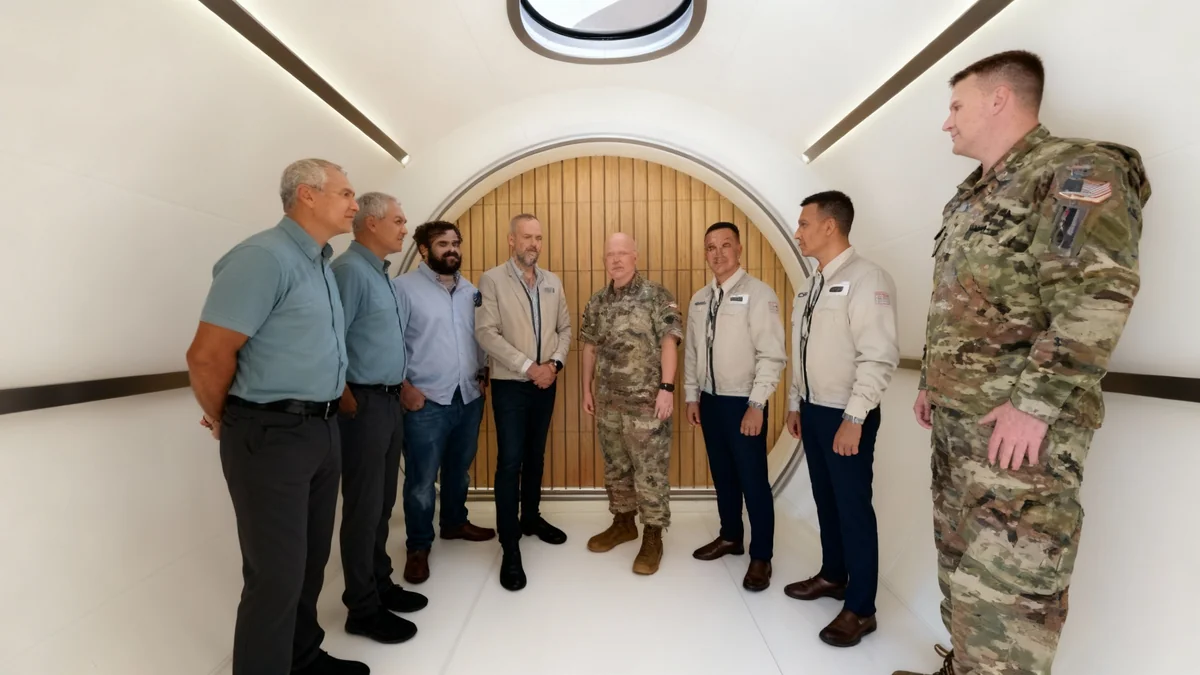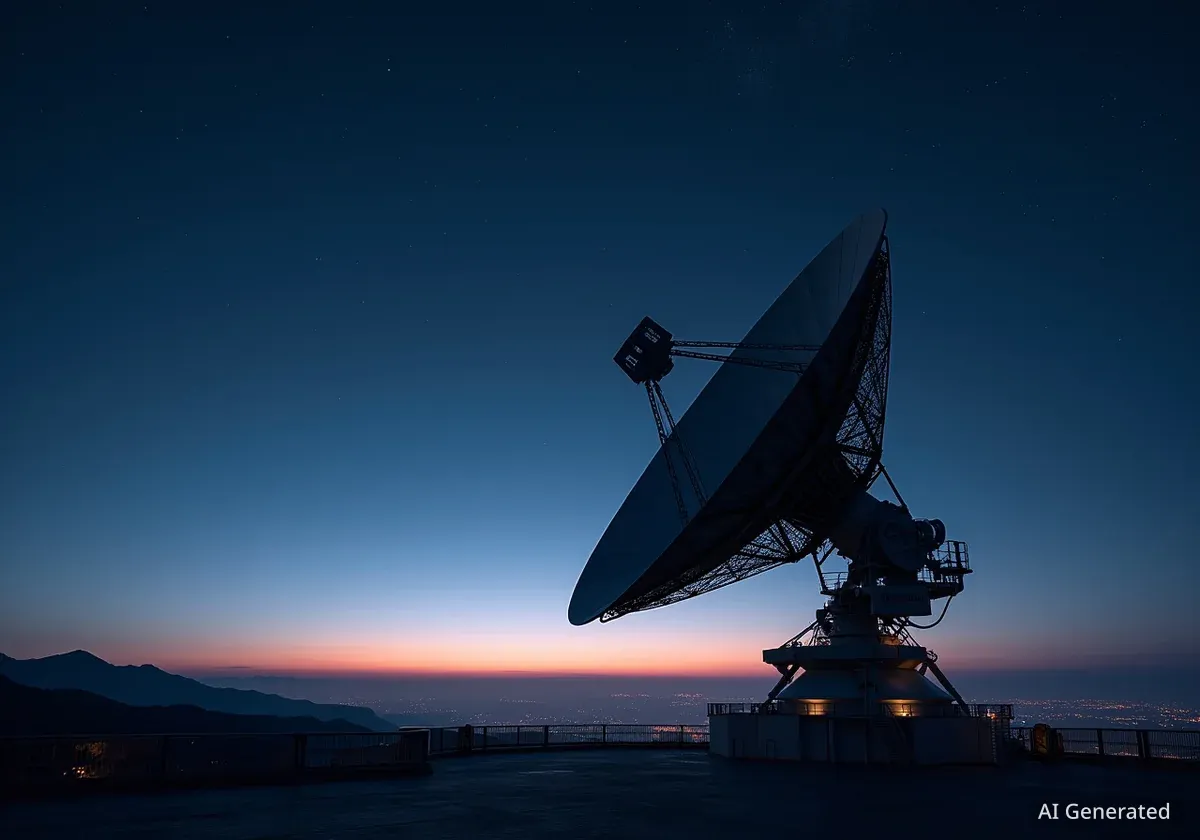WASHINGTON — A key Pentagon nominee has called for a significant reorganization of America’s national security space programs, suggesting a closer integration between the U.S. Space Force and the National Reconnaissance Office (NRO) to improve efficiency and reduce costs. The proposal was made during a Senate confirmation hearing where the future of U.S. space dominance was a central topic.
Marc Berkowitz, nominated to be the assistant secretary of defense for space policy, told the Senate Armed Services Committee that unifying elements of the military and intelligence space communities is an option that “should be worth considering.” He argued that such a move could streamline how the nation builds, launches, and operates its critical satellite constellations.
Key Takeaways
- Marc Berkowitz, a defense policy veteran, testified before the Senate Armed Services Committee for the role of assistant secretary of defense for space policy.
- He advocated for considering tighter integration between the U.S. Space Force and the National Reconnaissance Office (NRO) to address inefficiencies.
- Berkowitz identified persistent budget overruns, schedule delays, and organizational bloat as key problems in national security space acquisition.
- The nominee also highlighted the proposed “Golden Dome” missile defense system and growing threats from China as top priorities.
A Call for Unified Space Operations
During his testimony, Berkowitz addressed long-standing issues within the national security space sector. He pointed out that despite the establishment of the Space Force in 2019, problems with program management have continued.
He noted that the number of organizations involved in space acquisition has actually increased, leading to a lack of synchronization between satellite development, ground systems, and user equipment. This fragmentation, he argued, has resulted in key defense programs running over budget and behind schedule.
The core of his proposal centers on the two main U.S. entities in space: the Space Force, which handles military missions like communications and navigation, and the NRO, which manages the nation's spy satellites. Both agencies build and operate complex satellite systems, sometimes with overlapping requirements.
“The problem of inefficient defense space acquisitions, one of the main concerns which prompted the U.S. Space Force’s creation, has not been resolved,” Berkowitz stated in a previously published op-ed, a sentiment he echoed at the hearing.
Historical Precedent for Integration
Lawmakers questioned Berkowitz on the specifics of this potential integration. Senator Jack Reed of Rhode Island asked if he supported the idea of the undersecretary of the Air Force also serving as the director of the NRO.
Berkowitz clarified that while he hasn't advocated for one specific solution, he is open to exploring models that have worked in the past. He reminded the committee of a time when leadership roles were shared between the Air Force and the NRO.
“Throughout much of the history of the national security space program, either the secretary, undersecretary or assistant secretary for space in the Department of the Air Force was dual hatted as the director of the NRO,” Berkowitz explained. He added that during much of that period, “both the defense and National Reconnaissance Office programs were run very efficiently and effectively.”
The Role of the NRO and Space Force
The National Reconnaissance Office (NRO) is a member of the U.S. Intelligence Community and is responsible for designing, building, launching, and maintaining America's intelligence satellites. The U.S. Space Force, the newest branch of the Armed Forces, is responsible for organizing, training, and equipping space forces to protect U.S. and allied interests in space.
Focus on Missile Defense and Emerging Threats
Beyond organizational reform, Berkowitz outlined his primary goals if confirmed. A major focus would be the development of the “Golden Dome” program, a conceptual multi-layered missile defense system designed to protect the U.S. homeland.
This ambitious initiative would rely on a network of advanced satellite sensors and potentially space-based interceptors to detect and neutralize ballistic, hypersonic, and cruise missiles. Berkowitz confirmed he would work closely with Space Force General Michael Guetlein, who manages the program, to develop the system’s critical components.
What is Golden Dome?
- A proposed homeland missile defense system.
- Designed to be multi-layered, targeting threats before or during flight.
- Would use satellite constellations with advanced sensors.
- May include space-based interceptors to destroy incoming missiles.
- Requires sophisticated battle management and command and control systems.
Berkowitz also underscored the growing threat from strategic competitors, particularly China. He warned that China’s expanding counterspace and missile capabilities are explicitly designed “to undermine our historic advantages in space, contest our freedom of action, jeopardize our military forces and operations, and hold the U.S. homeland at risk.”
He stressed that maintaining “unimpeded access and use of space is of vital national interest” in the face of what he described as an “extraordinarily complex” threat environment.
Bipartisan Support for Efficiency
The call to reduce redundancy in space programs found a receptive audience among some senators. Senator Angus King of Maine, an independent who caucuses with the Democrats, voiced his support for streamlining efforts.
“We can’t afford to develop parallel space capabilities where there’s overlap and the cost involved is enormous,” King stated during the hearing. “I hope you will continue your provocative thinking.”
Appearing alongside Berkowitz was Joseph Jewell, the nominee for assistant secretary of defense for science and technology. Jewell’s testimony complemented Berkowitz’s focus, as he pledged to prioritize research into space-based sensing and missile detection technologies, which are fundamental to the Golden Dome concept.
“We’re going to rely on some of those space based layers, as well as ground based layers, in order to execute the sensing and custody that we need,” Jewell said, affirming his commitment to advancing the underlying technology for future defense systems.
As the confirmation process moves forward, Berkowitz's proposals have set the stage for a potentially significant debate on the future structure and strategy of America's defense and intelligence operations in space.





